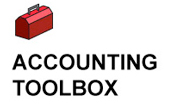Accountants work within and across organizations, providing expert review and advice to both the accountant community and—more importantly—the non-accountant community. An accountant must be able to communicate concepts by understanding the following six key components:
(1) understanding what must be communicated
(2) understanding the audience
(3) determining the best communication method(s)
(4) developing and, if possible, peer reviewing the communication materials
(5) delivering the communications
(6) receiving constructive feedback on delivery to improve future efforts
What
The first step is understanding what topic must be communicated. If this is an audit engagement, what communication techniques would be expected? If this is a budget and actual performance presentation, what would be an effective way of sharing data? If this is a Securities and Exchange Commission (SEC) filing, what must be shared?Audience
Knowing the audience is the key to successful communication. Communicating to the Board of Directors of a major corporation would be much different than with the local not-for-profit charitable foundation. Successful communications require consideration of the audience's financial knowledge, demographics, location, and external influences that may be outside the control of the communicator.Method(s)
Determining the best communication method is a blend of both the topic and the audience. A Board of Directors interested in year-to-date sales performance may prefer both a formal written report and possibly an oral presentation. A local not-for-profit charity may prefer a very informal 30-minute chat. An audit statement and related management letter follows a very formal, well-defined process and should be fairly consistent from engagement to engagement. A technical tax accounting article would require a formal paper with appropriate APA format citations.Materials
Developing the communications materials will take time, research, and critiques from peers or superiors. Following good writing techniques, doing appropriate research, and having well-planned presentations are all part of the communications development process. A list of recommended writing resources is provided below. If a speech or a presentation is part of the communication, additional resources are also provided below.Communications
Delivering the message is the culmination of all the steps provided above. Delivery may be either formal or informal; it may be verbal, written, or a combination of the two. It may be to one or more audiences, with tailoring to the audience as needed.Feedback
Receiving constructive criticism is a sometimes overlooked aspect of communications. The feedback mechanism may vary depending on the communication type and the audience. It could be in the form of questions raised, or a survey taken after a presentation or a continued client engagement. Receiving, weighing, and incorporating feedback will improve future communications. You do not necessarily need to take the advice but you should surely consider it! Delivering, receiving, and using constructive feedback is a skill, as is evaluating the feedback itself; ask yourself if the feedback is relevant and how you should use it.
Resources:
An Overview of Communications:
The International Association of Business Communicators (IABC) provides guidance in many forms of business communications. These include stockholder communications, government communications, and communications case studies.
The American Communication Association is another communication association that can provide an overview of communication styles and techniques.
Effective Writing:
UMUC's Effective Writing Center (EWC) is the first recommendation.
Second, UMUC offers very effective writing courses. WRTG 391/391X are technical writing courses that can be used for upper-level credit. WRTG 394 is an advanced course in business writing. Do not delay taking the writing courses; students find them very helpful!
Strunk and White's The Elements of Style offers additional writing support. This is a classic treatise on writing.
American Society of Business Publication Editors (ASBPE) is the professional editors' website, where you may find additional guidance on effective writing.
APA Style. UMUC follows the American Psychological Association (APA) style guide.
Effective PowerPoint Presentations:
PowerPoint Presentation Tips. See this link for 12 tips on creating better PowerPoint presentations.
There are also numerous effective videos available online on how to and how not to use presentation software. Try searching for some and share the best ones with your classmates in a conference.
Effective Speaking Skills:
Toastmasters has chapters worldwide and is an excellent public speaking program.
UMUC offers courses in speech, including SPCH 397, on presentations, and SPCH 424, on complex organizational communications. These can be taken as electives.
Books to Consider:
Effective Writing for Accountants by May and May and Perrin's APA Guide:
Effective Writing, 9/e
May & May
©2012 | Prentice Hall | Paper; 288 pp | Instock
ISBN-10: 0132567245 | ISBN-13: 9780132567244
Pocket Guide to APA Style, 4th edition
Robert Perrin - Indiana State University
ISBN-10: 0495912638 ISBN-13: 9780495912637, 176 Pages PB
